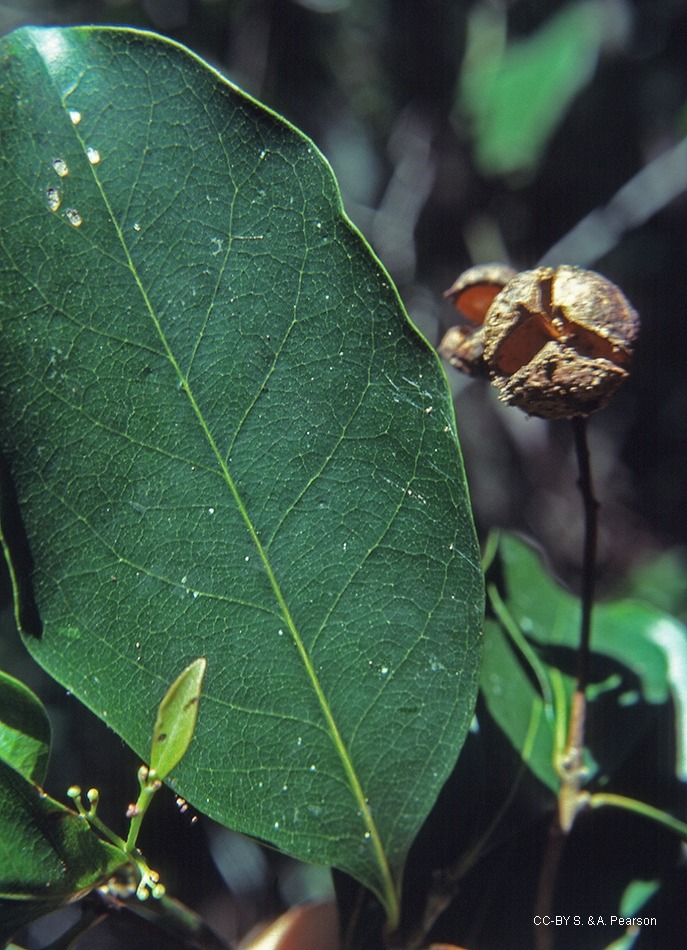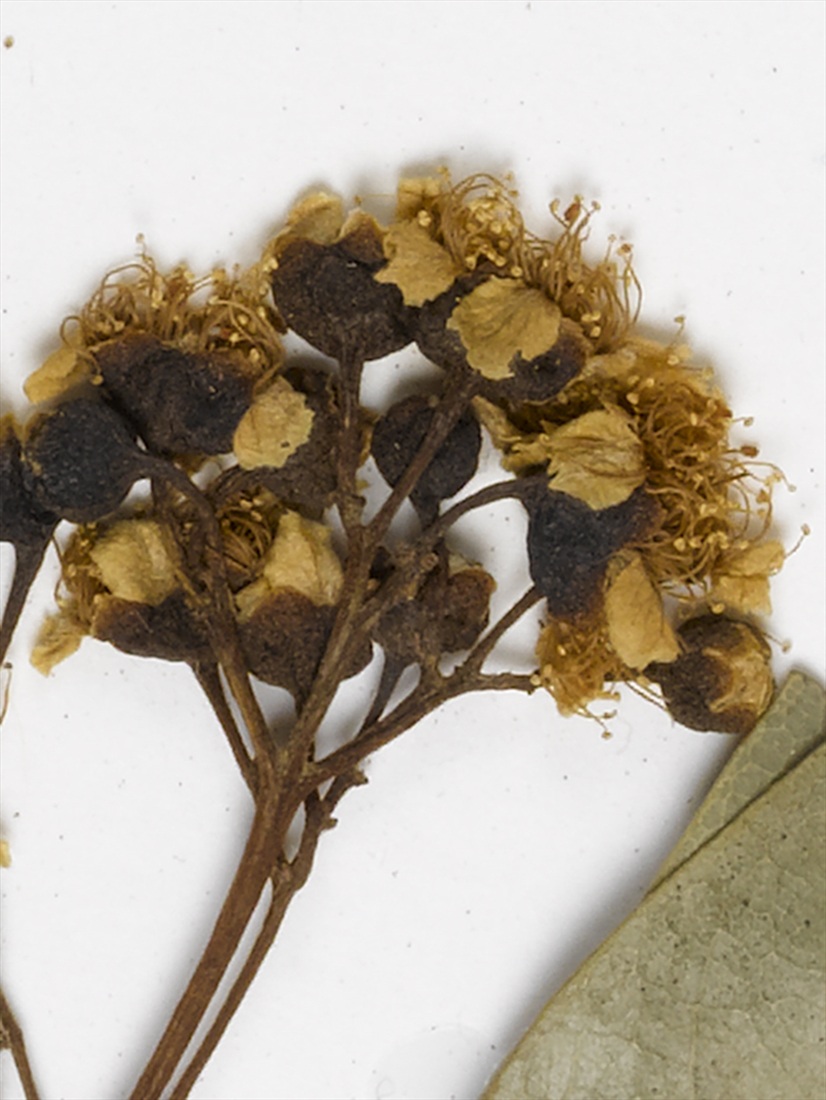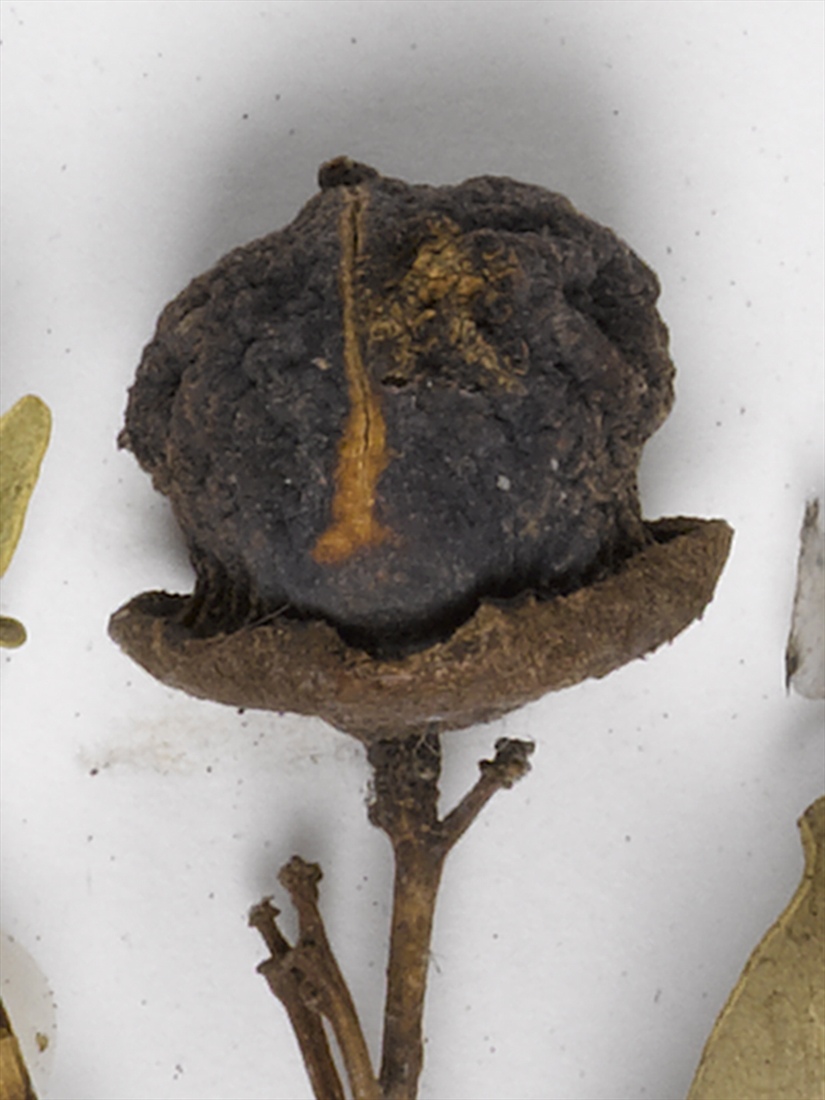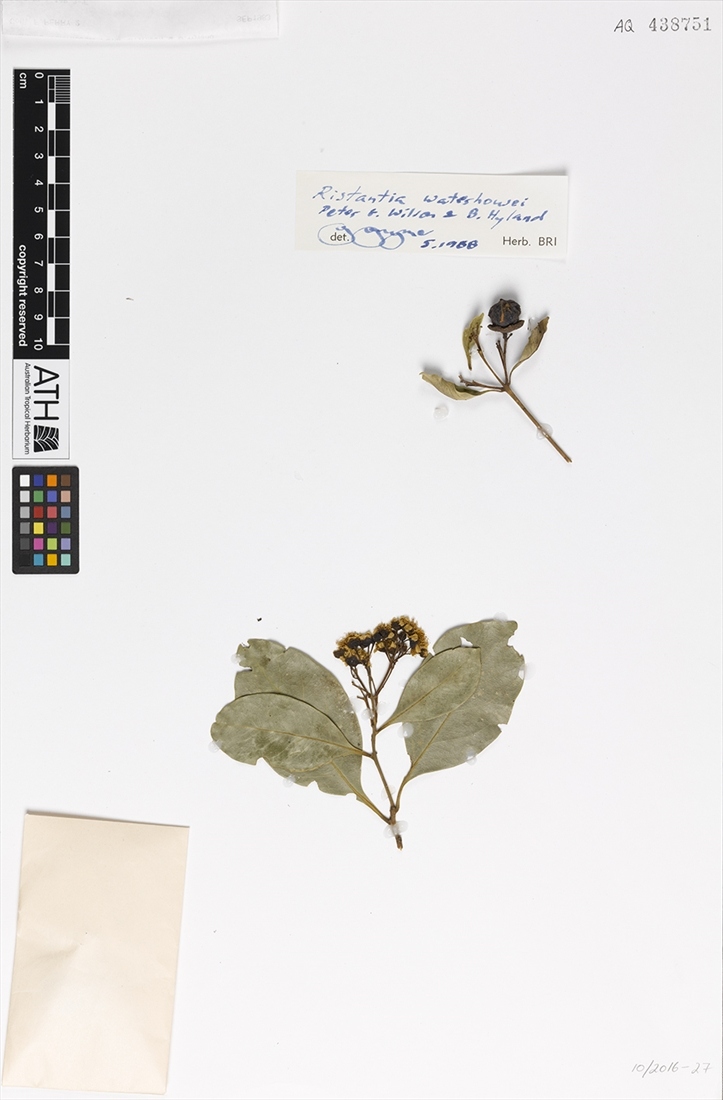Australian Tropical Rainforest Plants - Online edition
Ristantia waterhousei Peter G.Wilson & B.Hyland






Tree to over 20 m tall. Bark brownish, the surface tessellated with thin flakes.
Leaves simple and alternate. New growth red. Petiole to 1.3 cm long. Leaf blade elliptic, rarely obovate, about (4-) 5-12 (-16) cm long, (1.8-) 3-5 (-5.8) cm wide, base cuneate to attenuate, margin often with a few teeth, apex obtuse to acute or acuminate. Lateral veins curved throughout their length but not forming distinct loops. Oil dots visible to the naked eye or with a hand lens.
Inflorescence paniculate, axillary, up to 4 cm long; flowers bisexual or very rarely male. Hypanthium cup shaped, glabrous on outer surface, with long hairs more or less appressed or flattened against inner surface below stamens. Sepal lobes 4 or 5, semicircular, 1-2 mm long, 1.5-4 mm broad. Petal 4 or 5, orbicular, 2.5-3 mm long, white, with short hairs flattened against inner and outer surface. Stamens about 80-100, in 2-3 series, the inner series in bundles opposite petals; filaments 1-3.5 m long, anthers to 0.5 mm long. Staminodes or sterile anthers few, sterile anthers pale orange and larger than fertile ones to 1 mm long. Stamens free to base, if connate only at based where fused to hypanthium in bundles. Ovary reported as half-inferior in literature but observed as ± superior in dissected flowers, glabrous or with short tortuous hairs. Style 5 mm long.
Fruits a brown globose capsule, 1-1.5 cm diam, rugose. Hypanthium persistent in fruit and appearing flat with a deflexed margin forming an inverted rim around base of fruit. Valves opening deeply to fruiting hypanthium. Seeds often 3, up to 6 per fruit, ovoid, about 9 mm long, testa pale brown. Embryo with coiled or straight cotyledons, radicle straight.
No features available.
This species differs to Ristantia gouldii by the more numerous stamens, and a broader fruiting hypanthium, R. gouldii has a smaller invaginated or sunken hypanthium which appears more like a narrow sunken disc at the base of the capsule. Ristantia pachypserma differs from both the above species in having hard, thick, furrowed bark, stamens fused together in more distinct groups and a flat or broadly obconical (inverted cone) fruiting hypanthium.
1209





